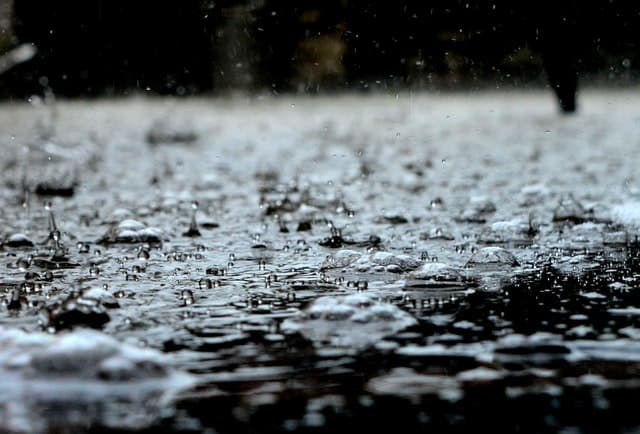Where Do Clouds Go When They Disappear?

Clouds are crucial for the weather and climate on Earth. As per NASA, a cloud is a mass of water drops or ice crystals suspended or floating in the atmosphere as we see them in the sky. They form when water condenses in the sky, and this condensation allows us to see the water vapor. Let’s discover many other aspects of clouds in detail.
Where Do Clouds Appear in the Atmosphere?
There are five layers of the atmosphere around the Earth:1. Troposphere, 2. Stratosphere, 3. Mesosphere, 4. Thermosphere and 5. Exosphere.
The lowest layer of Earth’s atmosphere is the troposphere. About 75-80% of the atmosphere lies in the troposphere. Most types of clouds are found in the troposphere, and almost all weather occurs within this layer which is further divided into three layers. Clouds are classified into three main groups: stratus, cirrus and cumulus.
- The low-level or Strato or Nimbo-level (below 2000m). Here cumulus, stratocumulus, stratus, cumulonimbus and nimbostratus clouds can be seen. Usually, the cumulonimbus and nimbostratus clouds can reach higher elevations. The temperature remains colder and helps in raindrop formation, hail, or snow.
- The mid-level or Alto-level (between 7000m and 2000m). Here altocumulus and altostratus clouds can be seen. The nimbostratus clouds reach from the strato-level to the upper levels of the alto-level, where the lower temperature leads to the condensation of water vapor into raindrops.
- The high-level or Cirro-level (between 12000m and 7000m). Here cirrocumulus, cirrostratus, and cirrus clouds are visible. Generally, the cumulonimbus clouds can reach from the strato-level to the upper levels of the cirro-level.
Do Clouds Really Disappear?
Clouds do not disappear. They just become invisible water vapor by different mechanisms. Usually, the micro-droplets of water are transformed into another form of water.
Where Do Clouds Go When They Disappear?
Sometimes they evaporate and become invisible water vapor. That’s how clouds disappear. There are three mechanisms by which the clouds may “disappear.”
1. Increase in temperature
When a cloud’s temperature increases, evaporation occurs, and then the air has a higher capacity to evaporate liquid water and reduces the liquid moisture content of the cloud.
A cloud can be warmed by longwave emissions from the Earth’s surface and solar radiation. During the daytime, heating increases the capacity of the air to evaporate liquid water. Hence, it seems clouds go disappear.
2. The mixing of the cloud with the drier air
When drier air is mixed into the cloud, the cumulative relative humidity decreases and the cloud droplets evaporate. After mixing with environmental air, the cloud will look wispy with edges that are not well defined instead of having a sharply defined appearance, leaving the skies clear. This process is called entrainment. During entrainment, drier air incorporates itself into the cloud and induces evaporation, and clouds go disappear.
3. The air sinking within the cloud
When air sinks, it warms adiabatically, which will induce evaporation and erosion of the cloud. This can occur when dynamic sinking mechanisms instigate or increase over a cloud or field. These sinking mechanisms include low-level CAA, NVA, low-level divergence, and downslope flow. Again, it makes the cloud disappear.
4. Advection
In this process, the cloud droplets are found moving along at roughly the speed of the wind at cloud height, where the clouds are carried by the wind in the direction toward which the wind is blowing. This continues until the clouds have moved out of the area and the sky clears up.
Do Clouds Disappear When it Rains?
Clouds usually appear white in our eyes because the tiny water droplets inside are tightly packed and reflect most of the sunlight that hits them. Therefore, our eyes perceive it as white with all wavelengths of sunlight mixed together.
When it’s about to rain, we can see clouds darken because of the water vapor clumping into raindrops, leaving larger spaces between drops of water. As a result, the scope of reflection of light is less. Also, that is why the rain cloud appears black or gray.
When rain falls, the clouds become less dense, and the sunlight falling on the large raindrops is refracted. Consequently, the white light is split into the constituent colors of light, forming a rainbow with red, orange, yellow, green, blue, indigo, and violet.
After it rains, if the air is warm, the misty droplets in the straggly cloud may change back again into vapor. Once most of the water droplets of the rain cloud fall down out of the cloud as raindrops, the density of the droplets diminishes.
The energy of the Sun heats the rest of the droplets again, causing them to become invisible water vapor again. The rest get changed into invisible gas. That is precisely why clouds evaporate faster during the daytime than at night.
Do Clouds Dissolve?
Clouds do not dissolve. Clouds can evaporate if they drop in altitude so that the temperature of the air is high enough that water droplets making up the cloud lose their water molecules to the environment.
Where Do Clouds Go at Night?
When there’s no sunlight, clouds are still trapping heat at night. These low, thicker clouds primarily reflect the Sun’s heat. This cools Earth’s surface, and the temperature drops. That’s why clear nights can be colder.
Clouds that are present high up in the atmosphere have the opposite effect. They have a tendency to warm the Earth more than they cool.
Where Do the Clouds Go When the Skies Are Clear?
There might be no clouds when the sky is clear blue and hot and sunny. The absence of clouds is the condition of pressure, and there are no mechanisms for clouds to form under these kinds of pressure conditions.
In this case, the area remains under the influence of high pressure or anticyclone. As a result, the air is sinking slowly rather than rising and cooling. As the air sinks into the lower part of the atmosphere, the pressure increases, it becomes compressed and warms up, and no condensation occurs.
Similarly, on clear nights, when there are no clouds in the sky to trap heat, heat can escape Earth’s atmosphere, and thus clear nights become cooler than cloudy nights.
Is Fog a Cloud?
The white mist-like formation we see in the sky is clouds formed from ice crystals or water droplets that get condensed and float in the sky.
Fog is called a low-lying cloud or a cloud on the ground. These are visible aerosols made up of tiny ice crystals or water droplets formed near the Earth’s surface. Fog and clouds differ from each other based on where they originate.
1. Altitude
The fundamental difference between clouds and fog is the altitude. Clouds form at different heights, several miles above the surface. You can spot them as low as 12m above the ground or as high as 12 miles above the sea.
However, fog only forms at the ground level. If it originates above the ground level, it will be considered a cloud and not fog. You will never find them more than 50 feet above the ground. Typically, if it’s lower than 50 feet, it is fog, and if it’s higher than 50 feet, it is a cloud. Fog is most common on clear nights when you cannot see clouds in the sky.
2. Significance
Clouds have greater significance in the atmosphere as they are primarily responsible for precipitation and balancing the water cycle. However, it is not so in the case of fog, as it does not add to any phenomenon in the atmosphere.
3. Visibility
Clouds occur throughout the year. One can always view clouds in the sky irrespective of the seasons or weather conditions. But fog can be seen only during the winters when vapor can be condensed at the ground level.
4. Density
The density is also a significant factor that segregates clouds from the fog. Clouds are denser than fog, but sometimes fog can also become dense. Generally, clouds have a density of 0.5g/m3, whereas fog has a density of 0.5g/m3 – 0.05g/m3.
5. Precipitation
Clouds are part of the water cycle, and therefore, they precipitate water back into the atmosphere in the form of rain. On the other hand, fog is not a part of the water cycle, so there will be no precipitation. Furthermore, since fog is generally formed at low altitudes, it cannot contribute to rain.
Can You Touch a Cloud?
We can see clouds, but the question is whether we can really touch the cloud? If you were to touch a cloud, it wouldn’t really feel like anything, just a little wet and damp, and your hand would go straight through it.
The clouds look fluffy. But unfortunately, no way does it feel like cotton balls or cotton candy! They are actually made of trillions of “cloud droplets.” These are very tiny particles of water, usually about 20 microns or 0.02 millimeters in size, which make up clouds. We can say for your better understanding that raindrops are generally 1 or 2 mm but can be as large as 4 – 5 mm, so this is at least 100 times smaller than a raindrop.
In fact, we all know about fog, a cloud that’s formed close to the ground instead of high in the sky. We can technically touch fog but feel nothing. Instead, we can move through it.
If you really want to touch an airborne cloud, the best way is either skydiving or in a hot air balloon. Try it!






